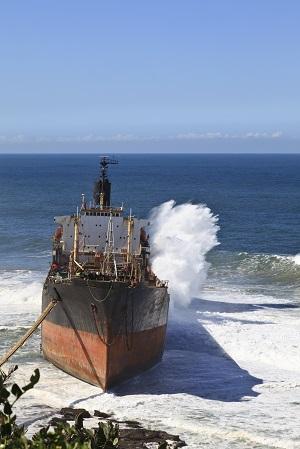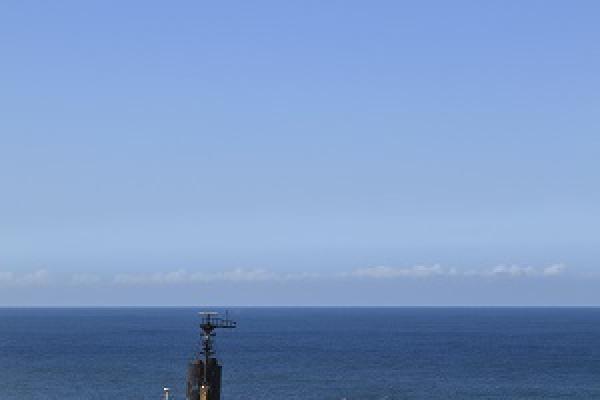
Ian Freeman
Published: February 06, 2020

Continuing from the publication of the revised SCOPIC 2018 form, reported in “Recent developments in Salvage” (Sea Venture 31), Lloyd’s of London has now concluded its review of the Lloyd’s Standard Form of Salvage Agreement, more commonly known as the Lloyd’s Open Form (LOF).
The new version named LOF 2020, and its associated Lloyd’s Salvage Arbitration Clauses named LSAC 2020, have seen some significant changes. The first and perhaps most obvious is the consolidation into one document1 of the previously separate arbitration clauses and procedural rules of LOF 20112. However, Lloyd’s have gone one step further and included into the same document the Fixed Cost Arbitration Procedure (FCAP) to encourage its use.
The main LOF 2020 form has seen two amendments. The first is a re-write of Clause H ‘Deemed performance’ on the reverse of the form. This clause addresses the circumstances in which a contractor may redeliver the casualty, that is the casualty is to be in a safe place and safe condition. The qualifying definition of what is a safe condition has been simplified to remove some slightly antiquated language although the meaning remains unchanged, that is the casualty may be redelivered in a damaged state provided it is not in need of skilled salvage services or the contractor is being prevented from demobilising through the intervention of a local authority.
In more recent years Lloyd’s have tried to identify the frequency by which the terms of a standard LOF have been amended by a side-agreement or other variation of its terms. In continuation of this initiative an additional provision has been inserted into ‘Important Notices No. 4’ obliging a contractor to disclose any agreement that seeks to amend or vary the standard LOF terms.
Another notable amendment found in the LSAC 2020 is that of the Special Cargo Provisions, now clause 143. Previously limited to container cargoes, these provisions provide an arbitrator the power to take into account the terms on which a contractor may have settled with a majority (by salved value) of cargo interests when considering the award to apply to the remainder unrepresented cargo interests. The provisions also permit small salved value cargo interests to be omitted from contributing to the overall salved fund. The change is that LSAC 2020 has removed the restriction to container cargoes4 and widened the application to any cargoes where the provisions may be appropriate.
An entirely new clause appears as clause 19 ‘Contractor’s Special Right to Terminate’. This clause seeks to address an anomaly between the termination provisions of SCOPIC and LOF. The difficulty arises where an owner may terminate SCOPIC but the contractor has no similar rights of termination under LOF. This may leave the contractor in the invidious position of having to attend a casualty with a potentially low salved value without the reassurance of SCOPIC remuneration or an Article 14 award5.
To explain. SCOPIC is a substitute method of calculating Special Compensation under Article 14 of the salvage convention. Once incorporated into LOF a contractor has no recourse to special compensation other than though SCOPIC itself. There are however two exceptions to this rule. The first entitles the contractor to withdraw from SCOPIC and rely on an Article 14 award if the owner fails to provide initial SCOPIC security6. The second permits the contractor to terminate the services under both SCOPIC and, crucially, to terminate the main agreement (LOF) if, under SCOPIC, the owner fails to provide increased security7. However, if the owner has complied with their SCOPIC security obligations the exceptions will not apply and on termination of SCOPIC the contractor is no longer earning SCOPIC remuneration, nor does the contractor have any automatic right to terminate the main agreement. In this position the contractor can only look to the slightly subjective termination provisions of LOF of whether there is any reasonable prospect of a useful result8 or that the casualty is in ‘safe place’ and ‘safe condition’9 for re-delivery to the owner. Termination of SCOPIC part way through a salvage operation is unlikely to trigger any of these criteria leaving the contractor bound to perform the operation under their LOF obligations with potentially limited prospects of a financial reward to reflect those efforts. The remedy to this imbalance in the termination provisions is to provide the contractor an opportunity to apply to the salvage arbitrator to bring the main agreement to an end.
Finally, in an attempt to reduce the cost of salvage arbitrations particularly in low salved value or straightforward cases, Lloyd’s have supported the Fixed Costs Arbitration Procedure (FCAP). The initiative has existed since 2005 but usage has proved disappointing and in an attempt to improve visibility of the procedure it is now fully incorporated within LSAC 2020. FCAP has also seen some changes with the nominal threshold increased to US$2,000,000 salved value and wider powers to the arbitrator to order FCAP for straightforward cases excess of the threshold value or order full arbitration in complicated cases below the threshold value.
Two documents (LOF and LSAC) are available on Lloyd’s Salvage and Arbitration Branch website: https://www.lloyds.com/market-resources/lloyds-agency/salvage-arbitration-branch/lloyds-open-form-lof
1 LSAC 2020
2 LSSA Clauses 2014
3 LSSA Clauses 2014 cl. 13, cl. 14 & cl. 15.
4 LSSA Clauses 2014 - Special Provisions
5 International Convention on Salvage, 1989, Special Compensation.
6 SCOPIC 2018 cl. 4(i)
7 SCOPIC 2018 cl. 4(ii)
8 LOF cl. G
9 LOF cl. H


